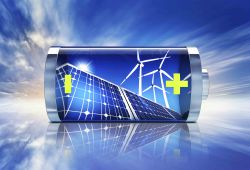Storing renewable energy in order to take advantage of it when weather conditions are uncooperative is now technically possible. Companies like Acciona are testing a system from Saft using lithium-ion technology.
Renewable energy is inexhaustible, does not contaminate, reduces energy dependence and creates five times more employment than conventional energy. However, there is one problem: it can’t be stored in tanks or reservoirs, and therefore it’s not always available.
Electric utilities are increasingly interested in developing large-scale energy storage systems which can guarantee uninterrupted energy supply when sunlight and wind are not available. A number of technologies now make it possible and companies are testing which one is the most economically viable.
Acciona and Endesa favor lithium-ion batteries and have been working with them for over 15 years. During that time they have come up with industrial applications based on this technology for the telecommunications, aviation, railway and renewable energy sectors.
For renewables, Saft’s technology consists of storing excess energy produced by wind turbines and solar panels (or both at the same time) in lithium batteries kept in 20-foot containers and connected with a utility company via remote control. When little sunlight or wind is available, the company can program the system to return this stored energy to the grid in order to maintain a constant supply.
The company taking the lead in this effort is perhaps Acciona, which a year ago carried out a similar experiment at its solar production facility in Tudela (located in the northern Spanish province of Navarra). The system, also designed by Saft, had capacity of 1.1 megawatts. Other electric utilities such as Iberdrola are also considering performing tests in this field.
